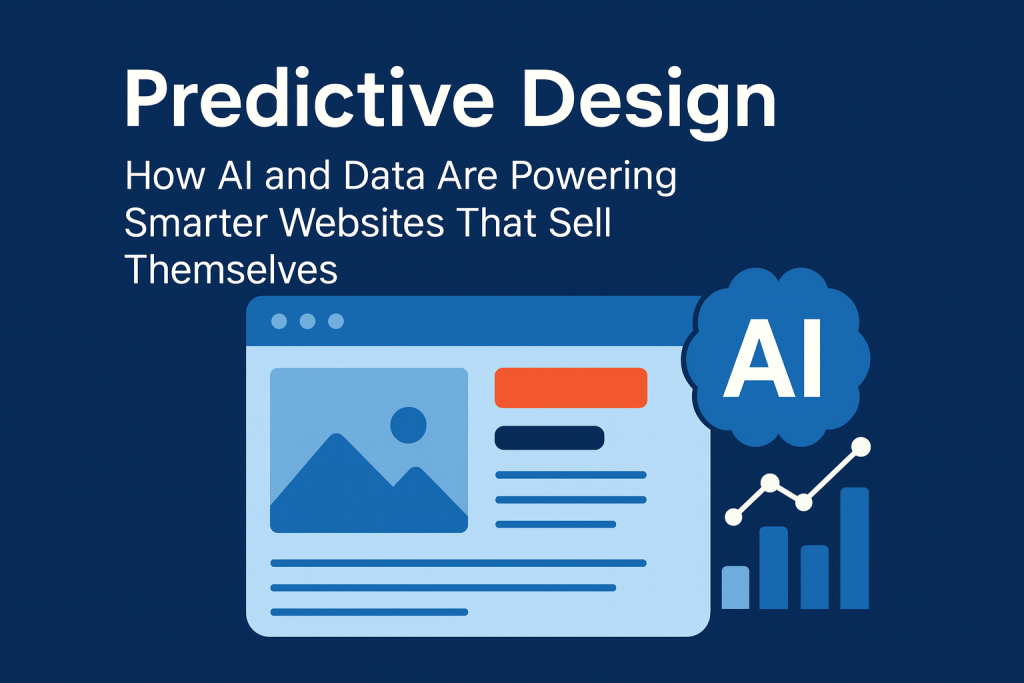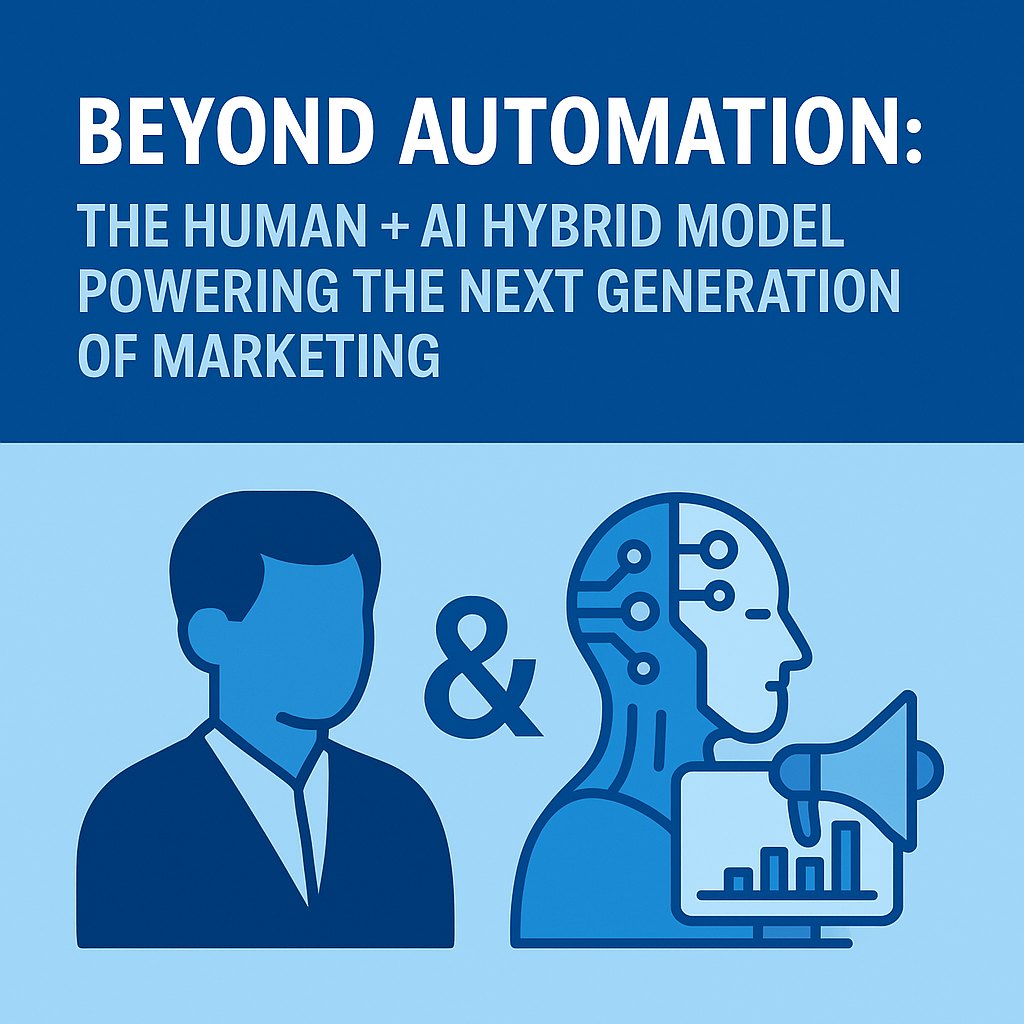Predictive design doesn’t just make sites look better or load faster. It creates intelligent, self-optimizing digital experiences that anticipate user needs, reduce friction, and increase conversions long before a visitor even realizes what they want.
This isn’t the future. It’s already here.
In this deep-dive guide, we’ll explore how predictive design works, the AI systems powering it, and why brands embracing this evolution are building websites that—quite literally—sell themselves.
What Is Predictive Design?
Predictive design is the practice of using AI, real-time analytics, historical data, and behavioral modeling to create website experiences that automatically adapt to each user.
Instead of a one-size-fits-all website, visitors see:
Different layouts
Personalized CTAs
Content recommendations
Tailored product suggestions
Custom user flows
Automated friction removal
Real-time messaging or nudges
Predictive design bridges the gap between what your users want and how your website responds—dynamically, contextually, and instantly.
At its core, predictive design is powered by three major forces:
AI-driven personalization
Machine-learning prediction models
Real-time behavioral data
Together, these elements allow your website to learn, anticipate, and evolve—just like a skilled salesperson who knows how to read a customer’s body language and respond with exactly what they need.
Why Predictive Design Became Essential
Digital behavior has changed dramatically over the last decade. Users expect speed, relevance, and seamless usability—and they abandon experiences that fall short.
Some modern realities:
53% of users leave if a page takes more than 3 seconds to load
71% expect personalized experiences from brands
76% get frustrated when websites feel “generic” or irrelevant
Conversion rates increase 200% or more with personalization
Consumers don’t just want websites that look good—they want experiences that feel tailored, intuitive, and effortless.
Predictive design gives brands the power to:
Understand user intent faster
Remove friction that stops conversions
Deliver hyper-personalized journeys
Reduce cognitive load for visitors
React instantly to user behavior
Increase conversions, retention, and lifetime value
This turns your website into a living, learning system that improves every minute of the day.
The Core Components of Predictive Design
1. AI-Driven Personalization Engines
These systems analyze:
They use this data to predict what content, products, or CTAs a user is most likely to engage with.
Examples:
Displaying “frequently bought together” combinations
Changing the homepage based on returning-visitor behavior
Adjusting pricing or offers based on purchase intent
Tailoring product recommendations dynamically
This creates a 1:1 experience at scale.
2. Behavioral Modeling & Intent Prediction
Modern AI can now detect:
By observing mouse movements, scroll patterns, and click hesitation, AI can instantly adjust the experience in real time.
For example:
If a user pauses for too long, a help prompt appears
If they show buying signals, the CTA becomes more prominent
If they scroll past pricing quickly, the page shifts to comparison charts
If they hesitate on checkout, urgency alerts or incentives appear
It’s the digital equivalent of having a highly trained salesperson guiding every interaction.
3. Real-Time Decision Engines
These systems decide what happens next on the website based on live user behavior.
They power:
Dynamic layouts
Adaptive CTAs
Smart pop-ups
Live messaging
Dynamic product feeds
Personalization rules
On-page nudges
Instead of manually optimizing pages with A/B testing, the AI adapts the experience in milliseconds.
This eliminates bottlenecks and accelerates conversion.
4. Predictive Content Architecture
Content is no longer static. Predictive design structures your website content based on:
For instance:
Returning users see more advanced info
New users see foundational messaging
High-intent traffic sees offer-focused layouts
Repeat purchasers see loyalty incentives
The content adapts automatically—creating consistency yet personalization.
5. Automated UX Optimization
AI continuously evaluates and improves:
Heatmaps
Scroll behavior
CTA click-through rates
Form completion rates
User drop-off points
Load times
Layout performance
Accessibility
Then it makes autonomous UX improvements, such as:
This means your website evolves without human intervention.
How Predictive Design Improves Conversions Instantly
1. Faster User Journeys
Predictive pathways direct visitors to what they want faster—reducing friction and increasing satisfaction.
2. Higher Relevance
Personalized content increases engagement, session duration, and conversion.
3. Less Cognitive Overload
AI removes unnecessary options for certain users, simplifying the experience.
4. More Emotionally Intelligent Design
Micro-interactions react to user behavior, making websites feel “alive.”
5. Better Timing of Offers & CTAs
A perfectly timed CTA converts significantly higher than a generic one.
6. Reduced Cart Abandonment
Predictive checkout experiences counter abandonment triggers in real time.
7. Continuous Optimization
The website learns from every user—meaning your conversions rise month after month.
Real-World Examples of Predictive Design in Action
1. Netflix
The entire interface changes based on:
What you watch
When you watch
What you click
How long you watch
This keeps users engaged and subscribed.
2. Amazon
Their product feed is a masterpiece of predictive design:
It’s why Amazon converts 10x higher than standard eCommerce stores.
3. Spotify
Spotify’s recommendation engine uses behavioral prediction to curate music for each listener—strengthening engagement and loyalty.
4. Modern SaaS Platforms
SaaS tools use predictive UX to:
This reduces churn and accelerates adoption.
Building a Predictive Website: What You Need
1. Strong Data Infrastructure
Predictive design runs on:
Event tracking
Analytics
User segmentation
Behavioral data
Heatmaps
CRM data
Attribution modeling
If your data isn’t clean, your predictions won’t be accurate.
2. AI-Powered Website Tools
These tools embed machine learning into:
Personalization
CRO
Recommendations
Automated UX
Predictive analytics
Popular tools include:
3. A Modular, Flexible Website Framework
Predictive design requires:
Traditional static sites can’t support this level of intelligence.
4. Human Strategy Behind the AI
AI doesn’t replace humans—it amplifies them.
You still need:
UX expertise
Conversion strategy
Brand messaging
Audience segmentation
Content strategy
Continuous review
AI provides the insights. Humans provide the direction.
The Business Impact of Predictive Design
Brands implementing predictive design report:
20–60% lifts in conversion rates
33% lower customer acquisition costs
40%+ increases in returning visitors
Up to 2x faster user journeys
Stronger customer loyalty
Higher average order values
Predictive design doesn’t just improve your website—it improves the entire way your business grows.
Predictive Design Myths (and the Truth Behind Them)
Myth #1: It’s only for big companies
Truth: AI tools have become affordable and accessible for businesses of all sizes.
Myth #2: Predictive design replaces human creativity
Truth: AI handles data; humans guide the strategy and storytelling.
Myth #3: It’s too complex to implement
Truth: Modular frameworks make predictive design achievable within weeks—not months.
Myth #4: Users dislike personalization
Truth: Users dislike bad personalization. Predictive design does it right.
The Future of Predictive Design
In the next 2–5 years, websites will:
Build themselves based on brand goals
Optimize themselves daily
Personalize every experience
Predict buying behavior before visitors land
Integrate conversational AI into every page
Automate photography, content, and layout assembly
Act as real-time sales engines
We’re moving from designed experiences to self-evolving ecosystems.
Websites will no longer be built—they’ll be trained.
Final Thoughts: The Age of Predictive Websites Has Arrived
The brands winning today—and dominating tomorrow—are the ones embracing the shift from static web presence to dynamic, intelligent ecosystems that adapt, learn, and convert.
Predictive design allows your website to:
Work smarter
Respond faster
Personalize deeper
Convert higher
Grow exponentially
The businesses that understand this shift will build digital experiences that feel intuitive, frictionless, and undeniably human—even though they’re powered by AI.
Your website is no longer a marketing tool.
It’s a living system.
A growth engine.
A salesperson working 24/7.
And with predictive design, it has never been smarter.










